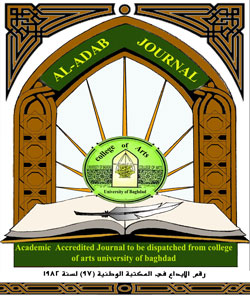Literature Circles Strategy as a Support for EFL Students’ Reading Comprehension Skills and Motivation
DOI:
https://doi.org/10.31973/rcwrad46Keywords:
literature circle strategy, reading comprehension skills, motivationAbstract
The current study aims to explore the impact of using literature circles strategy on supporting EFL college students ‘reading comprehension skills and motivation towards reading. Literature circles strategy is an activity in which the students meet to discuss and react to a text, book or short story which they are reading together. This research is an experimental one in which thirty college students in the experimental group were taught the short story (The Dolle’s House) by using the literature circles strategy, whereas the other thirty students in the control group were taught the same short story by using the conventional method. To achieve the aims of this study, an observation checklist of reading comprehension skills and a questionnaire of motivation toward reading have been administered by the researcher to get the necessary data. The findings reveal that the experimental group’s students performed better than the control group’s students with significant differences favoring the experimental group that was exposed to literature circles strategy. Pedagogical implications for EFL college teachers are presented to enhance and improve their students’ language learning by incorporating the literature circles strategy in EFL classrooms especially in teaching short stories and novels to support students ‘reading comprehension skills and motivation toward reading.
Downloads
References
Burner, K, J. (2007). ‘’ The effect of reflective and reflexive writing prompts on students ‘self – regulation and academic performance ‘’ Ph. D diss, Florida state university, Tallahassee. Diginole.lib.fsue.edu/etd/2732
Calderon, M. and Minaya –Rowe, L. (2004) Expediting Comprehension for English Language Learners: Teachers Manual. Baltimore, MD: Centre for Data – Driven Reform in Education / John Hopkins Universal.
Cunningham, A and Stanovich, K. (2001)” What reading does for the mind “. Journal of Direct Instruction. vol .1. No (2). P.137-49.
Daniels, H. (1991). Literature Circles: Voices and choices in the students – centered classroom. New York: Stenhous Publishers.
Daniels, H. (2002). Literature Circles: Voice and Choices in book clubs and reading groups 2 Nd ed. Portland, ME: Stenhouse.
Daniels, H .and N. Steineke (2004). Mini –Lessons for Literature Circles. Portsmouth, NH: Heinemann.
Daniels, H. (2006). Whats’ the next big thing with Literature Circles? Voices from the Middle, vol. 13. No (4). p.10-15
Elhess, M and Egbert, J. (2015). “Literature Circles as Support for Language Development “. United States. English Teaching Forum. Vol .53. No. 3.p.13-21
Fountas, I, C and Pinnell, G, S (2001). Guiding reading and writers ‘grades 3-6: Teaching Comprehension, genre and content literary. Portsmouth, NH: Heineman.
Harris, A and Sipay, E. (1984). How to increase Reading Ability. USA: The Alphine presses.
Janette, k, Klinger. (2007). Teaching Reading Comprehension to students with Difficulties. USA: The Guilford presses.
Krashen, S, D. (1981) Second Language Acquisition and second language learning. Oxford: Pergamon.
Lewis, D. (2004). Implementation of Literature Circles. https://scholarworks.uni.edu/grp/1083.
Maloch, B. (2002) Scaffolding Students’ talk: One teachers’ role in literature discussion groups. Reading Research Quarterly. Vol. 73.No. (1). P.94-112.
Noll, E. (1994). Social issues and literature circles with adolescent. Journal of Reading. vol. 38.No. (2). P. 88-93.
Routman, R. (1991). Conversations: Strategies for teaching, learning and evaluating. Portsmouth, NH: Heinemann.
Rosenblat, L. (1987) The Reader, the text, the poem. Carbondale, IL: Southern Illinous University press.
Ur, p. (1996) A Course in language teaching. Cambridge: Cambridge university press.
Wigfield, A, Guthrie, J. (1997) Relations of children s’ Motivation for reading to the amount and breadth on their reading. Journal of Educational Psychology, 89 (3), 420-432.
Downloads
Published
Issue
Section
License
Copyright (c) 2024 Zainab Jawad

This work is licensed under a Creative Commons Attribution 4.0 International License.
Copyright and Licensing:
For all articles published in Al-Adab journal, copyright is retained by the authors. Articles are licensed under an open access Creative Commons CC BY 4.0 license, meaning that anyone may download and read the paper for free. In addition, the article may be reused and quoted provided that the original published version is cited. These conditions allow for maximum use and exposure of the work.
Reproducing Published Material from other Publishers: It is absolutely essential that authors obtain permission to reproduce any published material (figures, schemes, tables or any extract of a text) which does not fall into the public domain, or for which they do not hold the copyright. Permission should be requested by the authors from the copyrightholder (usually the Publisher, please refer to the imprint of the individual publications to identify the copyrightholder).
Permission is required for: Your own works published by other Publishers and for which you did not retain copyright.
Substantial extracts from anyones' works or a series of works.
Use of Tables, Graphs, Charts, Schemes and Artworks if they are unaltered or slightly modified.
Photographs for which you do not hold copyright.
Permission is not required for: Reconstruction of your own table with data already published elsewhere. Please notice that in this case you must cite the source of the data in the form of either "Data from..." or "Adapted from...".
Reasonably short quotes are considered fair use and therefore do not require permission.
Graphs, Charts, Schemes and Artworks that are completely redrawn by the authors and significantly changed beyond recognition do not require permission.
Obtaining Permission
In order to avoid unnecessary delays in the publication process, you should start obtaining permissions as early as possible. If in any doubt about the copyright, apply for permission. Al-Adab Journal cannot publish material from other publications without permission.
The copyright holder may give you instructions on the form of acknowledgement to be followed; otherwise follow the style: "Reproduced with permission from [author], [book/journal title]; published by [publisher], [year].' at the end of the caption of the Table, Figure or Scheme.











